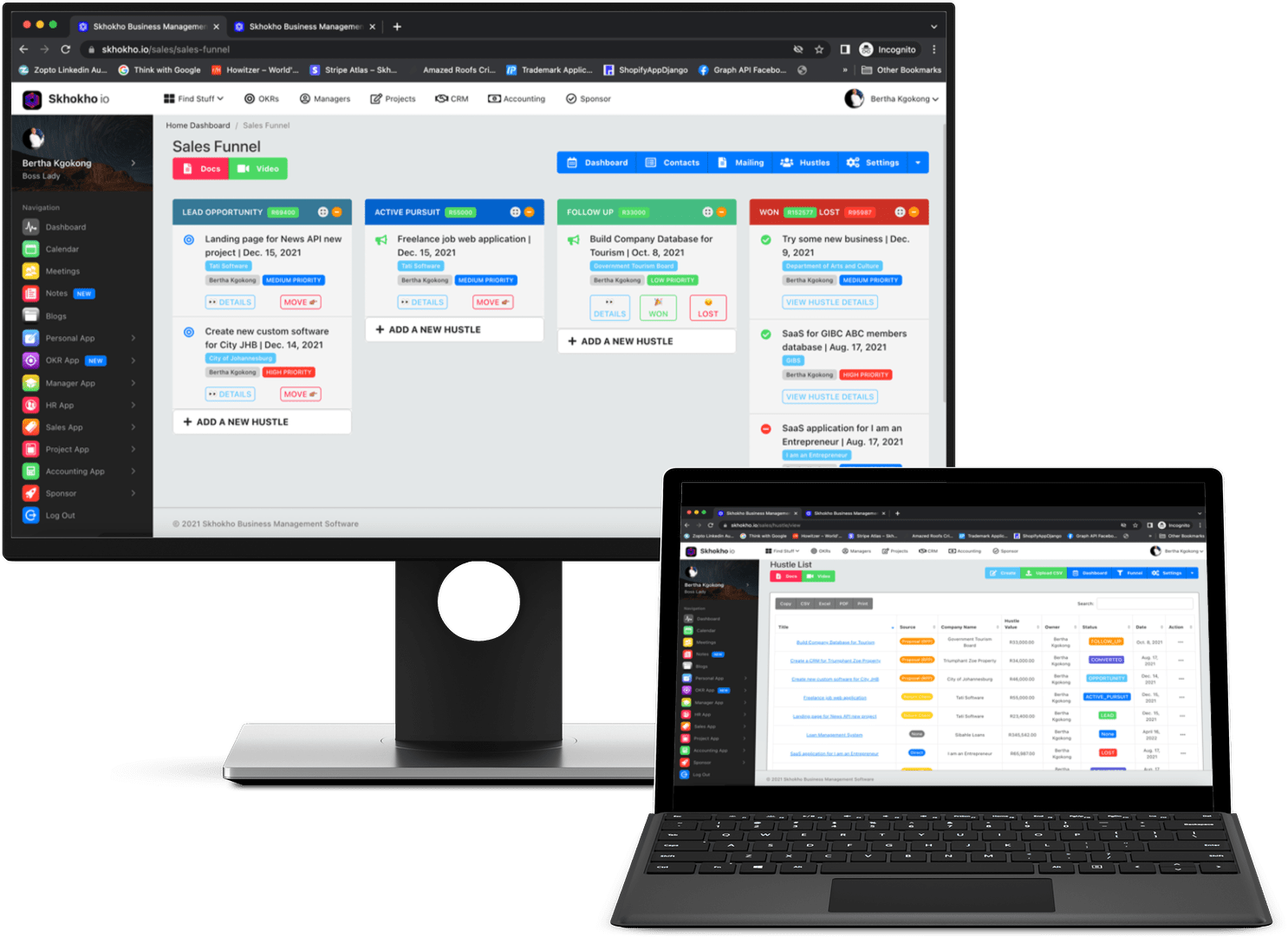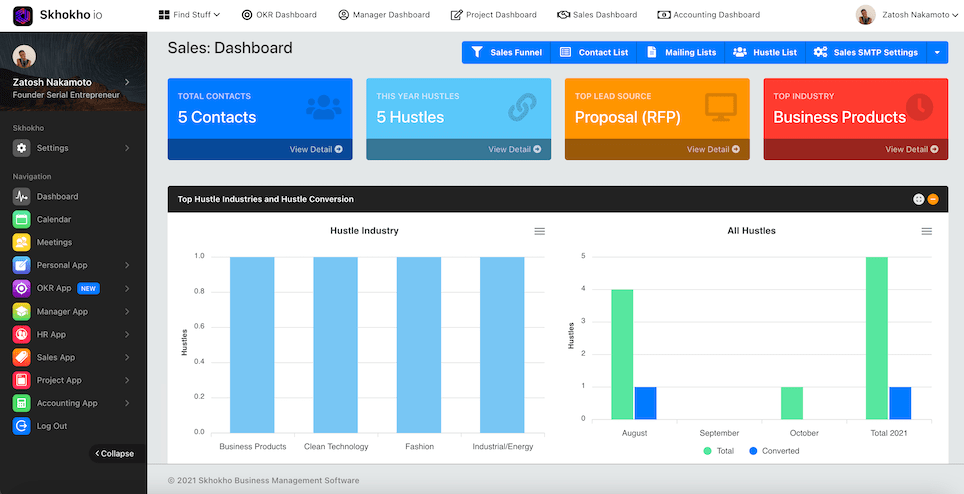Proven Sales Prospecting Techniques & Tips for Better Leads
Sales prospecting is one of the toughest parts of being a sales professional and is a skill that can take years to master. This blog is about the best sales prospecting techniques and tips for getting higher quality sales leads.
With the advent of social media, and the growing arsenal of sales prospecting tools and softwares, Sales prospecting has become more challenging and complex. Some of the best sales prospecting techniques have been around for decades. But most sales professionals have either forgotten about them or don't have time to use them.
Effective sales prospecting is the key to success for any business. If you know how to generate more leads and convert them into sales, you will be successful.

We will focus on the following:
- Defining Prospecting
- Types of Prospects
- B2B vs. B2C prospecting
- The Difference Between Leads and Prospects
- Sales Prospecting Process
- Sales prospecting tips & techniques for better leads
- How To Write Sales Prospecting Emails
- Skhokho Sales CRM
What is prospecting?
Prospecting is the process of identifying and qualifying potential customers for a business' products or services. Prospecting typically involves research, outreach, and follow-up, and can be done using a variety of methods, including email, phone calls, in-person meetings, and online marketing campaigns.
The goal of prospecting is to generate a list of qualified leads, which a sales or marketing team can then pursue. The process of prospecting can be time-consuming and requires a significant investment of resources, but it is essential for businesses that want to grow their customer base.

There are a number of different prospecting strategies that businesses can use, and the most effective approach depends on the products or services being sold, the target market, and the resources available. However, all prospecting efforts should focus on building relationships with potential customers and providing them with valuable information that will help them make a buying decision.
The most important thing to remember when prospecting is that it is a numbers game. The more people a business contacts, the more likely it is to find potential customers. Therefore, businesses should not get discouraged if their initial efforts don't result in immediate sales. With persistence and a little bit of luck, prospecting can eventually pay off in a big way.
Sales prospecting can also give businesses a competitive edge by providing early insight into potential customer needs and wants. By understanding the needs of their target market, businesses can develop products and services that better meet those needs. Additionally, businesses that engage in sales prospecting can build a relationship with potential customers before their competitors do.
Types of Prospects
Prospects are qualified leads who match a company's ideal customer profile as determined by a sales team.
The situation isn't quite as straightforward as it seems. Prospects can be classified into two: marketing prospects or sales prospects.

Marketing prospects
The term "marketing prospect" refers to contacts who may turn into leads - or, 'prospective leads'.
Email lists are a good example.
Contacts are only prospective leads until they are acted upon. As soon as they confirm their interest, they will become leads.
Sales prospects
There are various types of sales prospects.
Sales prospects are the next level down from B2B(Business-to-business) marketing prospects, which are at the very top of the channel.
Prospects become sales leads when they are ready to communicate with a named individual on a two-way basis.
By this point, they are likely to have expressed an interest in purchasing your product or service, and they are ready to talk about specifics.
A sales prospect's call to action will emphasize continuing the conversation until an outcome is achieved.
B2B vs. B2C Prospecting
Business-to-business, or B2B, marketing refers to the process through which companies create and promote their goods and services to other companies. When businesses create and sell their goods and services directly to consumers or to the end users of the product, this is known as business-to-consumer (B2C) marketing.
B2B businesses have the chance to gain greater exposure and investment by having a wider target audience. These businesses gain visibility through numerous business channels and word-of-mouth advertising (from customers & from other organizations). Additionally, B2B clients are more devoted, (despite B2C's larger consumer base), due to the likelihood that B2B clients and businesses have contracts and/or other long-term commitments, this is true.
In a B2B partnership, switching costs are also a little greater, which helps build more durable business-customer relationships. This indicates that the business now has a reliable source of income. Companies benefit from enhanced brand awareness through various channels with both B2B and B2C, which helps a company establish itself on the market more swiftly.
Companies benefit from enhanced brand awareness through various channels with both B2B and B2C, which helps a company establish itself on the market more swiftly.
The Difference Between Leads and Prospects
Sales leads and sales prospects are different. A sales lead is a person or company who shows interest in your product. A sales prospect is someone who is qualified to buy your product. A sales lead can become a sales prospect after following a sales process that earns their trust and leads them to purchase your product. You can think of sales leads as fishing bait and sales prospects as the fish. Your sales team uses sales leads to reel in sales prospects and turn them into customers.
Though they can easily be re-used, the terms distinguish between prospect and lead. All prospects lead to opportunities but not all prospects are one.

How to Prospect: Sales Prospecting Process
The goal of the sales prospecting process is to find potential customers (prospects) who are likely to buy the products or services you offer. To do this, you need to identify and research your target market, and then reach out to them with marketing messages that are relevant and interesting.
The sales prospecting process can be divided into four main steps:
1. Research your target market
Before you start reaching out to potential customers, you need to first research your target market. This will help you understand who your ideal customers are, what they’re interested in, and where you can find them.
- There are a number of ways you can research your target market, including:
- demographic research (e.g. age, gender, location, income, etc.),
- psychographic research (e.g. interests, values, lifestyle, etc.),
- and market segmentation (e.g. dividing your market into smaller groups based on shared characteristics).
2. Identify your ideal customers
Once you’ve researched your target market, you need to identify your ideal customers. These are the people who are most likely to buy your products or services, and who you should focus your sales efforts on.
- To identify your ideal customers, you can use criteria such as:
- Demographic criteria (e.g. age, gender, location, income, etc.)
- Psychographic criteria (e.g. interests, values, lifestyle, etc.)
- Behavioural criteria (e.g. customer needs, buying habits, etc.)
3. Reach out to your prospects
Once you’ve identified your ideal customers, you need to reach out to them with marketing messages that are relevant and interesting. There are a number of ways you can do this, including:
- Email marketing
- Social media marketing
- Content marketing
- Advertising
- Direct mail
- Sales calls
4. Qualify your prospects
After you’ve reached out to your prospects, you need to qualify them to determine if they’re likely to be interested in your products or services. There are a number of criteria you can use to qualify your prospects, including:
- Need – Do they have a need for your products or services?
- Budget – Do they have the budget to buy your products or services?
- Authority – Do they have the authority to make a purchasing decision?
- Timing – Is there a time pressure that would make them more likely to buy your products or services?
- Interest – Are they interested in your products or services?
Once you’ve qualified your prospects, you can start working on closing the sale.

Proven sales prospecting tips & techniques for better leads
Sales prospecting requires a lot of time, effort, and energy. If done right, it can be the difference between a successful sale and a failed one.
Unfortunately, prospecting is often overlooked or done poorly, resulting in wasted time and resources.
To help you get the most out of your prospecting efforts, we’ve put together a list of proven sales prospecting techniques and tips. Here are some proven sales prospecting techniques and tips that can help you generate more leads and increase sales:
1. Be Persistent
Persistence is key when it comes to sales prospecting. Many sales reps give up too soon and miss out on potential deals.
Remember, it takes an average of 8 touches to close a deal. So, don’t give up after the first no.
2. Personalize Your Approach
Personalization is important in all aspects of sales, but it’s especially important in prospecting.
Your prospects are bombarded with generic sales messages on a daily basis. If you want to stand out, you need to personalize your approach.
This doesn’t mean you need to write a personalized message for each and every prospect. But, you should at least mention something specific about the prospect in your initial contact.
3. Use a Script
Having a script can be helpful, especially when you’re first starting out. A script will give you a structure to follow and help you stay on track.
However, don’t rely on a script too much. Your goal should be to sound natural, not like you’re reading from a script.
4. Qualify Your Leads
Not all leads are created equal. You need to qualify your leads to ensure you’re only spending your time on the best ones.
There are a number of different factors you can use to qualify a lead, such as budget, authority, need, and timeline.
5. Use Incentives
Incentives can be a great way to get people to take action. If you’re having trouble getting people to respond to your messages, try offering an incentive.
For example, you could offer a free consultation or a discount on your products or services.
6. Keep Track of Your Progress
It’s important to keep track of your progress when prospecting. This will help you see what’s working and what’s not.
There are a number of different tools you can use to track your progress, such as a CRM system or a simple spreadsheet.

7. Get Help From a Professional
If you’re having trouble generating leads or closing deals, consider working with a professional. A sales coach or consultant can help you fine-tune your prospecting efforts and close more deals.
8. Always Be Learning
The sales landscape is constantly changing. To be successful, you need to always be learning.
Read sales books, attend sales events, and listen to sales podcasts. The more you know, the better your prospecting efforts will be.
9. Take a Break
Last but not least, don’t forget to take a break. Prospecting can be draining, both mentally and physically.
If you’re feeling burnt out, take a day or two off. You’ll come back refreshed and ready to close more deals.
By following these tips, you can make your prospecting efforts more effective and efficient.
How To Write Sales Prospecting Emails
E-mail is still a popular marketing method—in good sense. 85% of buyers prefer communication over email. There's one key that makes a good email: the title.
Sales prospecting emails should be concise, interesting, and tailored to the specific recipient. The goal is to pique the recipient's interest and encourage them to learn more about your product or service.
Some tips for writing sales prospecting emails:
- Keep the subject line short and to the point.
- Get straight to the point in the body of the email.
- Use persuasive language to make your case.
- Use personalisation to make the email feel more relevant to the recipient.
- Use images and videos to break up the text and make the email more visually appealing.
- Use a call-to-action to encourage the recipient to take the next step.
The goal is to get the recipient to take action, whether that's scheduling a meeting or signing up for a newsletter. The email should also include a call-to-action (CTA) and a link to a landing page.
Skhokho Sales CRM
Skhokho sales and CRM app is intended to serve as your company's central hub for sales management. Small organizations may accomplish routine sales management tasks and facilitate team and departmental collaboration with the help of Skhokho CRM, a simple CRM system.

The App offers the following functionalities:
- Add new contacts to the business
- Create and manage contact/mailing lists
- Send marketing emails to your contacts
- Add and manage Hustles / Leads
- Add and manage meetings, related to sales
- Add and manage documents, related to sales
- Add and manage notes, related to sales
With Skhokho, you can track everything - you can record and document the entire sales journey. You can also visualise the current state of your sales initiatives at any time using the Sales Dashboard and Sales Funnel.

Get Started!
Skhokho offers a 14 day free trial, no credit card needed, click here here 👉🏽 https://skhokho.io/register
For more information on Skhokho Sales CRM App, click here 👉🏽 https://skhokho.io/documentation/sales/#sales-dashboard









